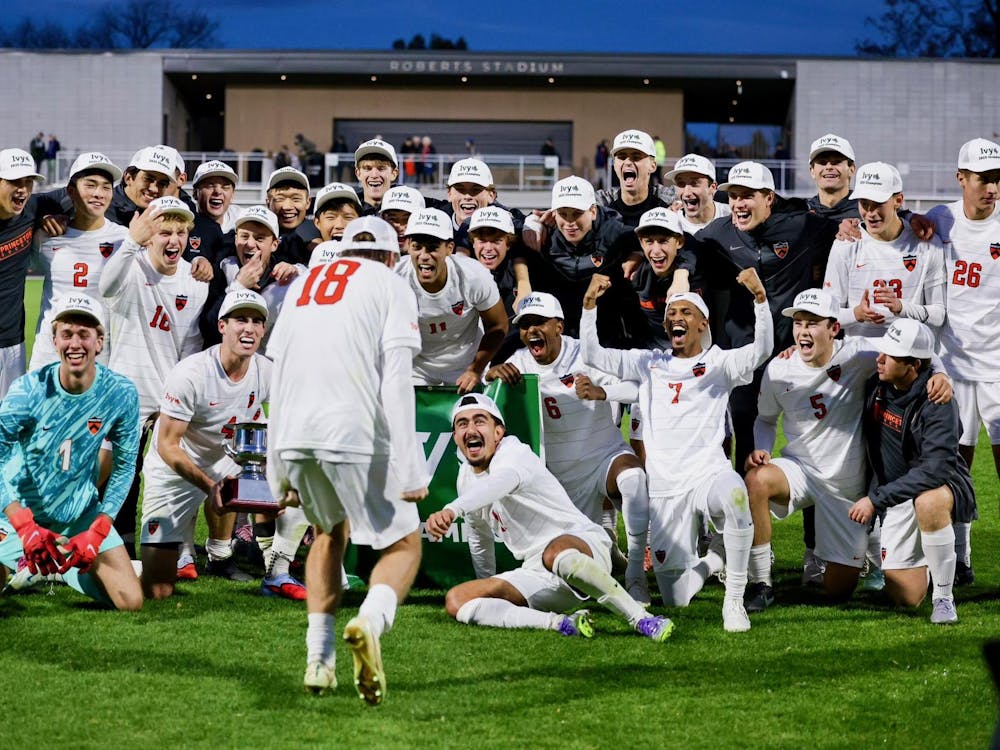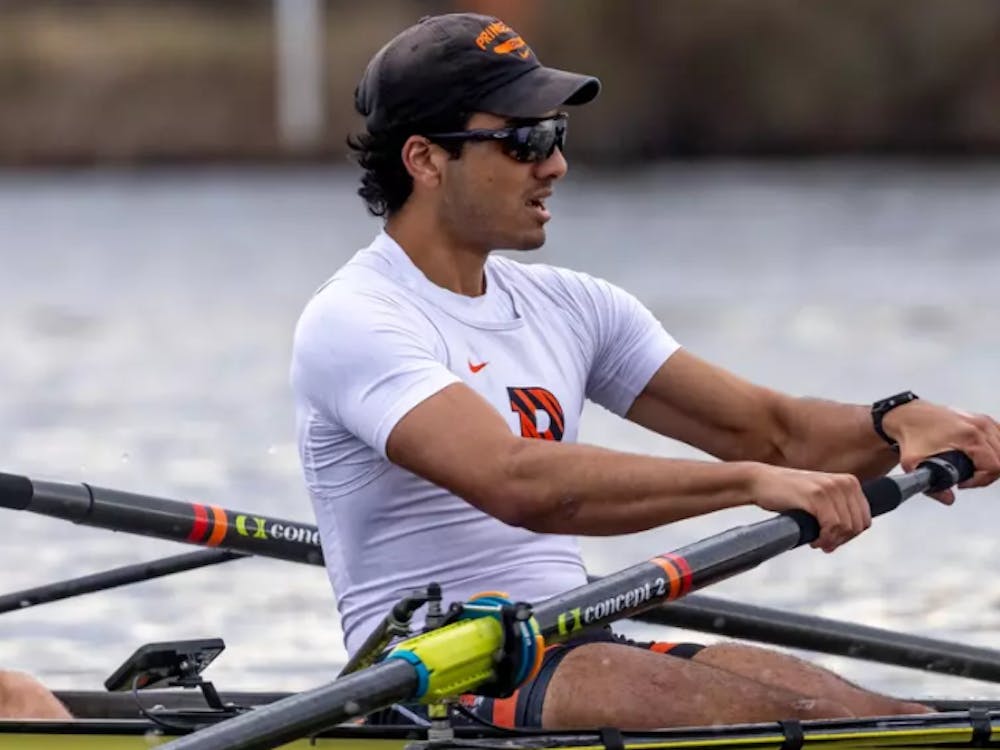Editor's Note: This is the third in a series of postcards that Daily Princetonian sports staff writers wrote about their experiences in the wide world of sports this summer. Keep reading through the next few weeks for more dispatches from across the country and around the world.
In late June I found myself in Big Sky country, at the tail end of a two-week father-son bonding trip through Montana and Wyoming. Having already spent time backpacking in Glacier and Yellowstone National Parks, we were in Jackson, Wyo., planning to spend a week trekking through Grand Teton National Park.
At that time of year, however, snow remains everywhere above 9,000 feet, making all of the higher passes in the park virtually impassable. In an attempt to find an alternative, my dad looked into climbing the Grand Teton, the 13,770 foot peak after which the park is named.
Unless you are an experienced mountaineer, the Grand — as I quickly learned to call it — is summitted with the help of a guide. We arranged our adventure through Jackson Hole Mountain Guides and were placed in the care of our very capable guide, Bob.
The climb began with a hike of 4,000 vertical feet out of the valley to high camp, situated at the base of the final approach to the peak. After two hours of steady hiking up mountainside switchbacks, we had covered five of the six miles, but only half of the elevation. Over the last mile we ascended 2,000 vertical feet over scree (loose gravel), talus (boulder fields) and snow.
We arrived at high camp, which serves as a base to prepare for the final summit attempt, in the early afternoon. The site, at an elevation of 11,000 feet, consisted of a large semipermanent hut and a number of tents for sleeping.
At high camp, we had just enough time to eat and prepare for our 7:00 p.m. bedtime. Why 7:00 p.m. you ask? Because our wake up time was 2:30 a.m.
In the Rockies, and most other alpine country for that matter, the weather is extremely unpredictable. Even in mid-July, you have to be prepared for thunderstorms every afternoon. We thus started early in order to be off the mountain by a target time of 1:00 p.m.
Before I knew it, 3:15 a.m. had arrived, and we were making our way up to the Grand's lower saddle sporting crampons, helmets and headlamps, with the rest of our equipment on our backs.
The hike up to the saddle required short-roping as we crossed a 55-degree (very steep) snowfield. Short-roping is a technique where all the members of the group are clipped into the same rope so that when one person stumbles the others can stop his fall. It sounded to me like a good way for everyone to end up in a heap at the bottom, but I was told otherwise.
Once we had reached the lower saddle, we ditched our boots and crampons in favor of approach shoes, a hybrid between boots and climbing shoes used in mountaineering. From there we scrambled up boulders and short pitches, short-roping the whole time, until we arrived at the technical final stretch.
The route we were to take to the summit was called the Owen-Spalding route, named after the first two people to scale the peak, William Owen and Frank Spalding, who summitted in 1898. It is the easiest route to the top, which, of course, initially offended the ambitious overachiever in me.

When we arrived at the technical, exposed sections of the climb, we switched to multi-pitch climbing. In this method, all climbers follow the lead climber — our guide, Bob — up one pitch at a time after he puts protection into the rock, into which all are continually secured.
Protection refers to the variety of devices climbers wedge into rocks, which serve as anchors in the case of a fall.
My job in the group was to bring up the rear and pull out the protection after all previous climbers had passed by. I returned the protection to Bob who then went up and placed protection over the next pitch.
Over the next hour or so, exposure and fear of heights gained new meaning for me. We were continually "clipped in," but for some reason 15 grams of aluminum wedged in a rock isn't too comforting as you cling to a rock by your fingertips while your foot is slipping into 2,000 feet of thin air.
I managed to hang on, though, and we made it up pitches with names ranging from Bellyroll to Double Chimney. We at last got past the technical section, by which point I had no complaints with having taken the "easiest" route to the top.
The remainder of the climb, just a couple hundred feet, was more short-roping up boulders with less exposure. Finally, around 11:30 a.m., I scrambled up the final pitch to stand atop the Grand.
The sight was breathtaking. I had climbed peaks of similar height before, but while those were in the shadows of larger neighbors, the 13,770 foot Grand stands above every peak for miles around, enabling 360 degrees of epic scenery. From Jackson Hole just south, to Yellowstone up north and the Wind River Range in the southeast, the views were astonishing.
After a brief lunch at the summit, we started down, trying to stay ahead of the afternoon storms. The descent's main excitement was a 100-foot rappel, which enabled us to bypass the most technical parts of the ascent.
By 2 p.m. we were back on the lower saddle, just as the thunderstorms were rolling in. As rain started to fall we glissaded — a technical term for sliding on our butts — down the previously treacherous snowfield and then made the short hike back to high camp, where we received congratulations and hot chocolate from the other climbers as we rode out the storm.
The next morning we bade farewell to the Grand and made our way back down to the valley floor, 4,000 feet below. Driving away, I looked back at the peak and then turned to my dad. "Next year, we're skiing down," I told him.
—Todd Ebe







